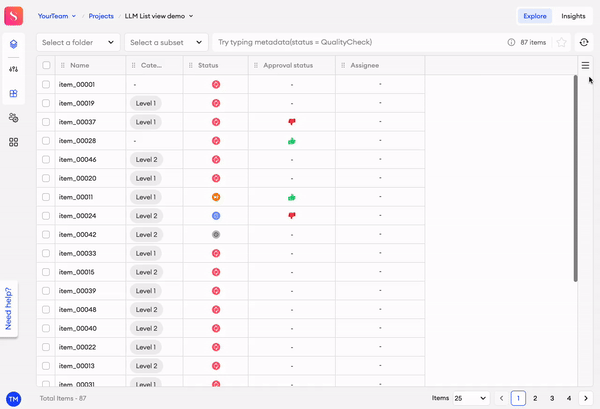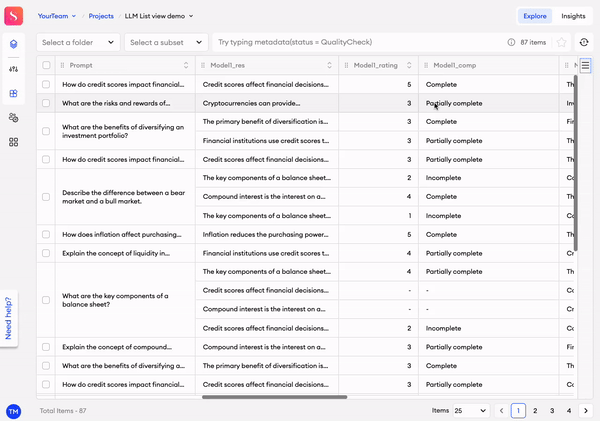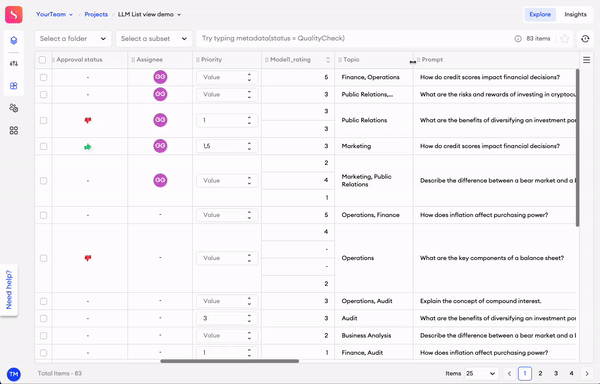Using Explore
Viewing your Multimodal project through Explore will allow you to manage and curate your items in various ways.
From Explore, you can carry out a number of bulk actions on your items, such as moving items to different folders or subsets. You can also examine your items on the go with Zoom View.
There are also a number of queries available for you to use in Explore so that you can find and curate your items effectively.

Customize your view
In Explore, you can see all the items in your project, listed in a table that can be customized and reorganized to your liking.
Step 1: Select the parameters

Through the Columns ☰ menu in the top right corner, you can select or deselect columns to customize your table's parameters as necessary. There are a list of item parameters that cover the base metadata of your items, and below them are all the components available in your project, listed by ID.
Item parameters: Name, Folder, Subset, Category, Status, Approval status, Assignee, and Priority score.
Component parameters:
- Input - Markdown, Text area, Number, Code, Paragraph, and Text Input.
- Select - Select, Slider, Checkbox, Radio, Voting, Rating, and Date.
Step 2: Rearrange your columns

You can choose to arrange your columns in any order, simply by clicking and dragging their corresponding reorder ⋮⋮ button. Additionally, you can resize the width of your columns in case you want to see the values in an expanded field. You can do so by clicking and dragging a column by the border of its heading.
Step 3: Pin columns

Let’s say there is a column you want to keep an eye on, or you want to always have it visible when you scroll through the list. You can pin the column to fix it into a static position on the left-hand side of the list.
To pin a column, simply click the pin button in the header. You can click it again to unpin it later. You can rearrange your pinned columns, but if you drag a pinned column into the list of unpinned columns, it’ll no longer be pinned.
- When you unpin a column later, it won’t return to its original position. Keep that in mind when pinning any column.
- There is no limit to the number of pinned columns.
Sort your list
There are two ways you can sort your list of items when looking at your project through List View.
Sort by UI
You can click on the up or down arrows on a column header to sort by component value. This can only be done on columns corresponding to the following component types: Number, Slider, Rating, Date, Text Input, Text Area, Code, Paragraph, and Markdown.
Sort by query
You can also sort your items by using queries, which you can read more about here.
Resync
Resynchronization, or Resync, is a way for you to give your dataset a manual update. You can read more about the cases where resyncing would be best applicable here.
Updated 9 months ago